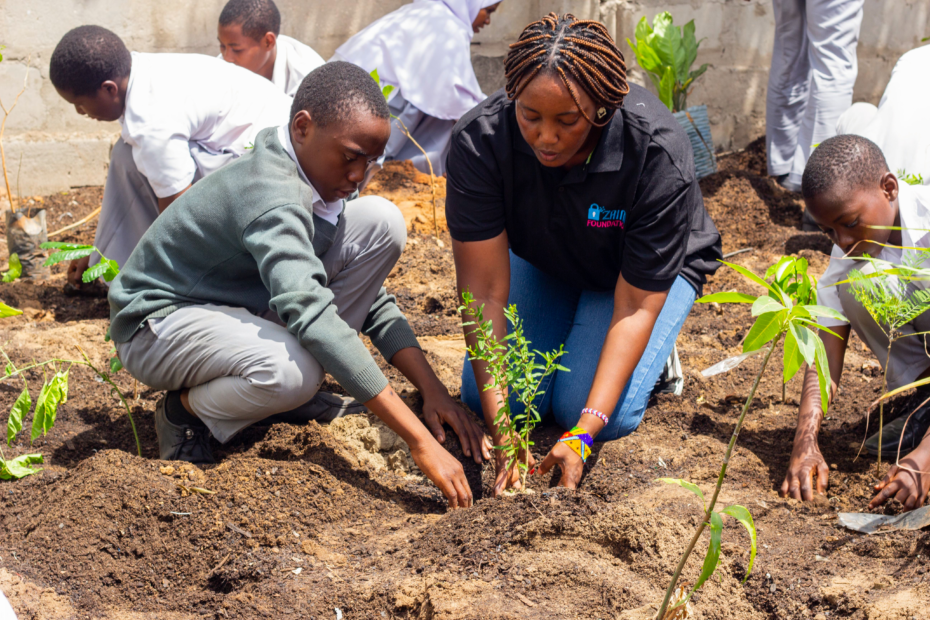In a world increasingly strained by the impacts of climate change, Tanzania has been making significant strides toward building a resilient nation that can navigate the complexities of a changing climate. Located in East Africa, Tanzania is home to a diverse range of ecosystems and communities that are vulnerable to the effects of climate change. The Tanzanian government has implemented various initiatives to control and adapt to climate change and build resilience within its society.
Initiatives and Strategies
Tanzania’s approach to building climate resilience is multifaceted, containing various initiatives and strategies. One of the significant initiatives has been the restoration and conservation of the country’s landscapes. Through a project by the United Nations Environment Programme (UNEP), Tanzania is working to restore about 30 million hectares of degraded and deforested land by 2030. Read Also: 8 African Countries at the Forefront of Climate Awareness
On a strategic level, Tanzania’s National Climate Change Strategy 2021 to 2026 outlines the government’s commitment to reducing greenhouse gas emissions and fostering resilience to climate impacts. The strategy includes agriculture, forestry, energy, and waste management actions. The African Development Bank (AfDB) has supported the nation in infrastructure projects that balance economic growth with climate resilience.
Tanzania’s efforts to restore degraded land and promote sustainable practices extend beyond large scale restoration projects. The government has also recognized the importance of empowering local communities to contribute to climate action through initiatives like the ECO-Village project.

Climate-Smart Agriculture
Tanzania is making significant developments in climate-smart agriculture (CSA) as part of its broad strategy to combat climate change and promote sustainable development. The adoption of CSA techniques is geared towards achieving triple wins: enhancing agricultural productivity, reducing greenhouse gas emissions, and boosting the resilience of farming systems.
Promoting sustainable and resilient farming practices is at the core of Tanzania’s CSA approach. The country actively encourages farmers to adopt agro-ecological techniques, such as conservation agriculture, agroforestry, and organic farming. Such methods mitigate climate change’s impacts and enhance soil health and biodiversity, contributing to long-term agricultural sustainability.
A key example of Tanzania’s commitment to CSA is the ECO-Village project. This initiative engages local communities in sustainable agri-business practices, demonstrating the viability of climate-smart agriculture at the grassroots level. Tanzania, therefore, ensures that its climate resilience efforts are inclusive and sustainable by focusing on community-level solutions.
The government is also investing in research and development to facilitate the adoption of CSA. This includes studies into climate resistant crop varieties, efficient water use technologies, and carbon sequestration techniques. Such research helps to tailor CSA practices to Tanzania’s unique agroecological conditions and farming systems.
Renewable Energy Adoption
Tanzania is making significant strides in adopting renewable energy, recognizing it as a viable solution to address the country’s burgeoning energy demand and contribute to socio-economic development. According to a report by the United States Agency for International Development (USAID), the Tanzanian government aims to achieve universal access to electricity by 2030, with a considerable portion to be generated from renewable sources.
The potential for renewable energy in Tanzania is significant, particularly in hydro, geothermal, and solar power. The government has established a goal to augment the share of renewable energy in Tanzania’s power mix and has thus initiated various policies and programs to support renewable energy development. Hydropower is the country’s most mature form of renewable energy, with several major hydroelectric power plants like the Kidunda and Mtera Dams collectively providing over 200 MW. Moreover, the government plans to increase hydropower capacity by 600 MW in the upcoming years.

Tanzania prides itself on having 109 mini grids that provide more than 180,000 customers with 157.7 megawatts of power from various sources such as biomass, hybrid, fossil fuel, and solar PV systems. Solar energy is becoming increasingly prominent in Tanzania, with large scale solar power projects such as the 30 MW Singida project and the 50 MW Nyumba ya Mungu project currently under development. The government has implemented programs such as a feed-in tariff and a net metering system to promote solar power development.
Despite these achievements, several challenges impede the growth of renewable energy in Tanzania. These include the lack of necessary infrastructure and technical expertise to support large-scale renewable energy projects, limited access to finance, and low electrification levels in rural areas. Nonetheless, the Tanzanian government remains committed to defeating these obstacles and realizing the country’s renewable energy potential.
Forestation Initiatives
Over the past few years, Tanzania has gained remarkable progress in forest conservation and sustainable agriculture. The country has dedicated a quarter of its land area to forest reserves, serving as carbon sinks to combat climate change. This vast expansion of forests captures and stores carbon dioxide, provides habitats for diverse wildlife species, and offers livelihoods to local communities.
One of the more remarkable reforestation projects is the establishment of three new forests by Ecosia, an ecological search engine that uses its revenue to plant trees worldwide. These projects therefore, aim to transform landscapes, protect endangered species, and provide stable income for local farmers. Similarly, initiatives like the Ilalasimba village project demonstrate the transformative power of sustainable practices, where women are being encouraged through animal husbandry, leading to improved crop yields and living standards.
Moreover, efforts such as Reforest Africa’s projects focus on restoring degraded lands, enhancing biodiversity, and boosting carbon absorption]. These projects have certainly attracted significant financial support, with Tanzania’s carbon credit projects gaining over $20 billion in funding.
Another innovative project is the Cardamom to Carbon initiative, which aims to regenerate Tanzania’s Eastern Arc Mountain forests, known for their rich biodiversity. This project harnesses the local community’s expertise in cardamom farming to restore the rainforest while providing a better life to the local population.
Bottom Line
While challenges persist, Tanzania’s deep approach to climate resilience represents a model for other developing nations. The country’s commitment to climate resilience is evident in its government policies and initiatives, which focus on sustainable agriculture, renewable energy, and forest conservation. As these efforts continue, Tanzania is safeguarding its own future and contributing to global efforts to combat climate change.
References
- UNEP News
- EC International Partnerships
- Climate Laws
- UNEP
- FAOLEX
- Trade Gov
- Adaptation Fund
- World Bank
- UNEP Lessons Learned



